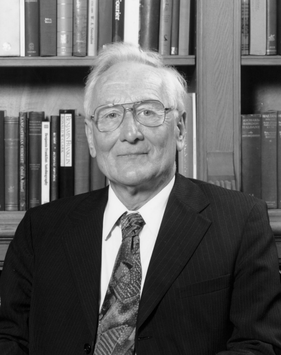Graham Dixon-Lewis facts for kids
Quick facts for kids
Graham Dixon-Lewis
|
|
|---|---|
 |
|
| Born | 1 July 1922 Caerleon |
| Died | 5 August 2010 |
| Alma mater | |
| Awards | |
Graham Dixon-Lewis (born July 1, 1922 – died August 5, 2010) was a British engineer. He was an expert in combustion, which is the scientific study of how things burn. This includes understanding fires, engines, and other processes that create heat and light.
He was also a Fellow of the Royal Society, which is a very important group of top scientists. Being a Fellow means he was recognized for his amazing contributions to science.
Contents
Early Life and Education
Graham Lewis was born in Caerleon, a town in Wales, on July 1, 1922. His family later changed their last name to Dixon-Lewis in 1944.
He went to Newport High School before studying chemistry at Jesus College, Oxford, from 1940 to 1944. After his studies, he earned a special degree called a DPhil in 1948. During this time, he worked with another famous scientist named John Wilfrid Linnett.
His Work at the University
In 1953, Dixon-Lewis started working at the University of Leeds in England. He joined a department that studied coal gas and fuel. He began as a research chemist, which means he did experiments and explored new ideas.
Over the years, he moved up in his career. In 1971, he became a Reader, which is a senior academic position. Then, in 1978, he was made a Professor. This meant he was a leading expert in his field. He retired from the university in 1987 and was given the title of Emeritus Professor, which is an honor for retired professors.
Visiting Other Universities
Professor Dixon-Lewis also shared his knowledge around the world. In 1965, he was a Visiting Professor at the Johns Hopkins University in the United States. This meant he taught and did research there for a short time.
Later, he was a Visiting Scientist at other important research places. In 1987, he visited the Sandia National Laboratories in California, USA. In 1994, he went to the Max Planck Institute in Germany. These visits allowed him to collaborate with other scientists and share his discoveries.
Awards and Honors
Graham Dixon-Lewis received many awards for his important work in combustion science. These awards showed how much his research helped others understand how things burn.
Some of his awards include:
- In 1990, he received the Egerton Gold Medal and the Silver Medal from the Combustion Institute.
- In 1993, he won an award from the Royal Society of Chemistry for his work on combustion.
- In 1995, he was elected a Fellow of the Royal Society. This is one of the highest honors a scientist can receive in the UK.
- In 1997, he received the Sugden Award from the British Section of the Combustion Institute.
- In 2008, he was given the Huw Edwards Prize by the Institute of Physics for his contributions to combustion physics.
Family Life
Graham Dixon-Lewis married Patricia Mary Best in Oxford on April 15, 1950. They had three children together: one son and two daughters.
His Passing
Graham Dixon-Lewis passed away suddenly on August 5, 2010, in Leeds, England. He was 88 years old. He was survived by his wife and their children.

